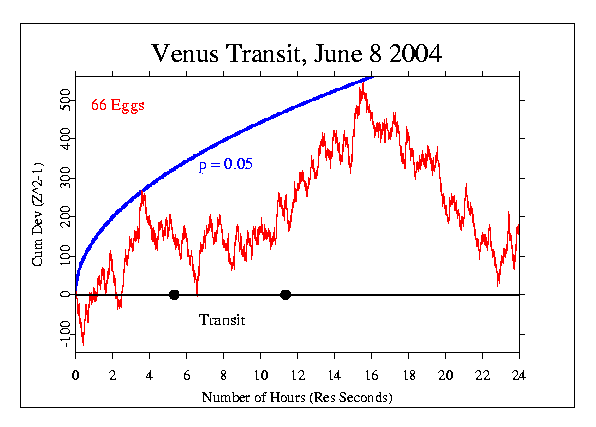Venus Transit 040608 |
|
Venus made a rare transit across the face of the Sun Tuesday, giving stargazers from Australia to the Middle East and Africa a celestial view that no living person had seen before. To the fascination of people around the globe armed for the occasion with telescopes, pinhole cameras and special dark glasses, Venus appeared at 0520 GMT: a small black dot on the lower edge of the Sun starting its six-hour transit. We decided to take an exploratory look at this, following a suggestion from Dick Shoup, as a possible physical effect related to changes in pendulum motion apparently attributable to eclipses. Would such astronomical alignments possibly affect small particles as well, and alter the sensitive random activity on which our random data are based? The time period that would seem to be relevant is difficult to specify, but it seems reasonable to look at some surrounding data. The figure below is marked to show the beginning of the transit and the subsequent 6 hours. During this period, the trend of the cumulative deviation is quite flat, as may be seen in the following figure, so we can conclude that the transit did not detectably affect the eggs. We note, in contrast, that there are quite strong trends both before and after the transit during the full 24 hour GMT day, visible in the second graph below. This isn't interpretable, but it is an interesting context.
|

